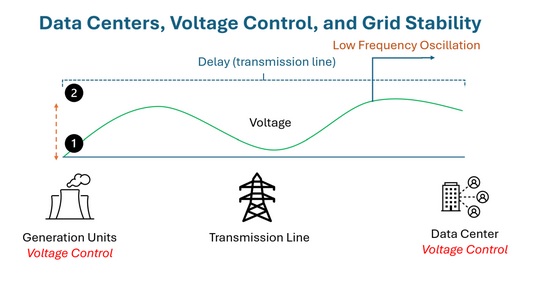For decades, voltage regulation was almost entirely the responsibility of generation units, with loads considered too small to influence grid stability. That assumption no longer holds true.
What’s Changing?
📊 Hyperscale Loads as Grid Players – Data centers, transport hubs, and industrial campuses now operate at megawatt scale. Utilities are requiring these facilities to actively support voltage, shifting part of the responsibility to the load side.
📊 Load-Side Voltage Regulation – Instead of being passive, modern loads are equipped with controllers that regulate local voltage. This can reduce strain on generators and improve voltage profiles near critical facilities.
Where the Risk Emerges
⏱ Delays in Real-World Systems – Transmission line propagation, sensing, processing, and actuation delays can add up to 500 ms to several seconds. These delays set the stage for unstable interactions between generator-side and load-side controllers.
🌐 Low-Frequency Oscillations – When both sides react late, oscillations emerge—sometimes sustained, sometimes escalating. Poor coordination and lack of damping can undermine grid stability.
Final Thought
Load-side voltage control is essential in the age of hyperscale facilities. But without careful design and coordination, this evolution could introduce new systemic risks to the grid. The key lies not only in what we control, but in how and when we do it.
📖 For the full article, check out: Data Centers Voltage Control: A New Era, A New Risk
